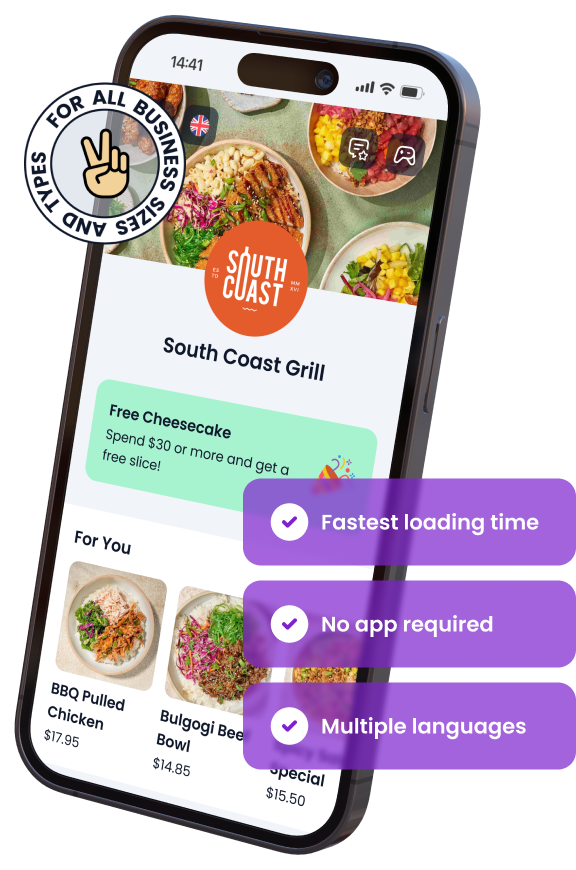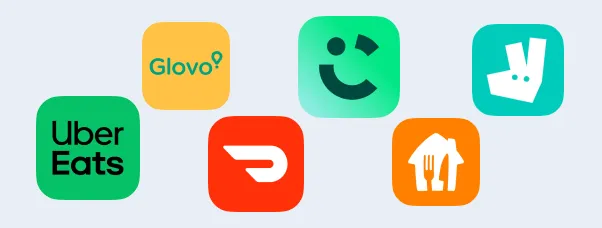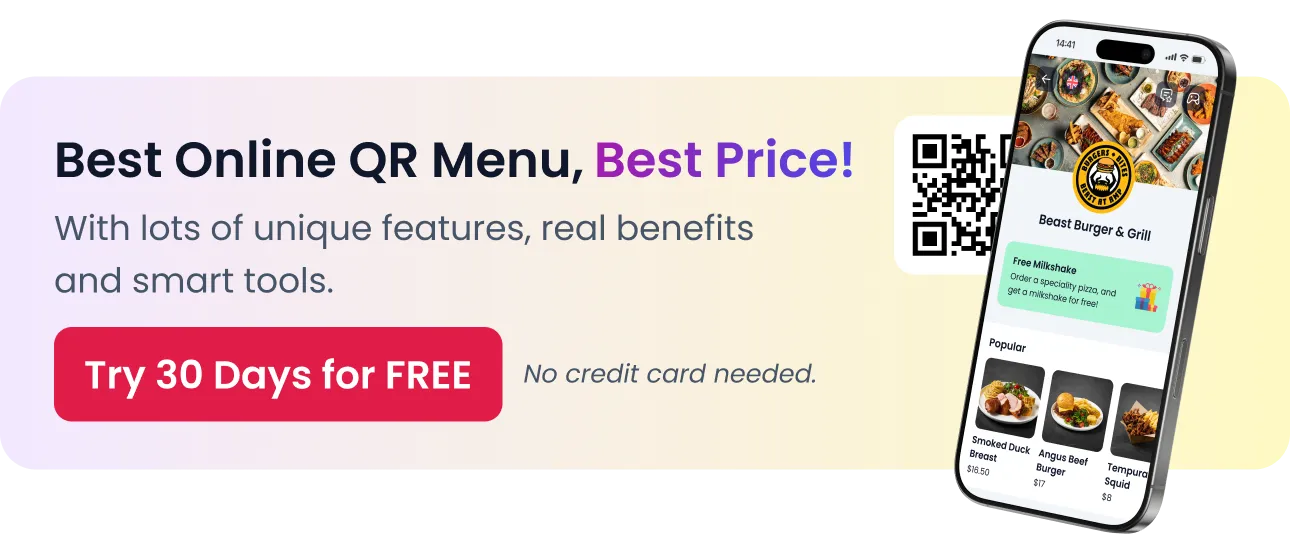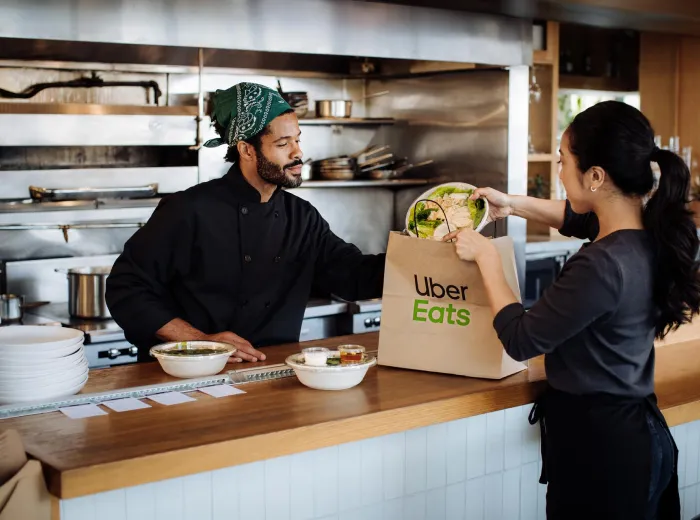

Rappi Fees and Commissions for Restaurants: Detailed 2025 Guide
In today’s competitive food and beverage industry, partnering with delivery platforms like Rappi has become essential for restaurants aiming to expand their reach and boost revenue. Rappi, one of the leading food delivery services in Latin America, provides restaurants with a convenient way to connect with customers while offering them an easy-to-use delivery experience.
However, working with a platform like Rappi comes with its own set of costs, primarily in the form of fees and commissions. These charges can significantly impact a restaurant’s profitability if not properly understood and managed. From commission rates to optional marketing expenses, it’s crucial for restaurant owners to have a clear picture of Rappi’s pricing structure to make informed decisions.
This guide dives deep into everything you need to know about Rappi’s fees and commissions in 2025. Whether you’re a small independent eatery or a large restaurant chain, this comprehensive resource will help you understand the costs, weigh the benefits, and find strategies to maximize your return on investment while working with Rappi.
What Is Rappi and Why Should Restaurants Use It?
Rappi has established itself as a powerhouse in the food delivery industry, particularly in Latin America. For restaurant owners, Rappi is more than just a delivery platform—it’s a tool to expand their business, attract new customers, and increase revenue streams. But what exactly makes Rappi a valuable partner for restaurants? Let’s break it down.
Overview of Rappi's Food Delivery Service
Rappi is a multi-service platform that connects users with restaurants, grocery stores, pharmacies, and more. Its food delivery service enables customers to order meals directly from their favorite restaurants and have them delivered to their doorsteps quickly and efficiently.
Key features of Rappi’s food delivery service include:
- Wide customer base: Rappi is highly popular in urban areas, giving restaurants access to a large audience.
- User-friendly app: Customers can browse menus, place orders, and track deliveries with ease.
- All-in-one platform: Restaurants can manage their menu, promotions, and orders through a dedicated interface.
By streamlining the ordering process, Rappi helps restaurants save time and focus on delivering great food.
Key Benefits of Partnering With Rappi
Collaborating with Rappi offers restaurants several advantages that go beyond just delivering food:
- Increased Customer Reach
- Gain visibility with customers who rely on food delivery apps for convenience.
- Expand your customer base without investing heavily in marketing.
- Attract both loyal locals and new customers trying out delivery options.
- Convenience for Customers and Restaurants
- Customers can order directly from their mobile devices, making the process seamless.
- Restaurants receive automated notifications and streamlined order processing.
- Boosting Sales During Non-Peak Hours
- Use Rappi to drive orders during slower periods with discounts or promotions.
- Maximize kitchen utilization by fulfilling more orders throughout the day.
Restaurants that use Rappi effectively can see a significant boost in sales and customer satisfaction.
How Rappi Compares to Other Food Delivery Platforms
When compared to other popular food delivery platforms like Uber Eats and DoorDash, Rappi stands out in several ways:
- Regional Focus: Unlike global platforms, Rappi specializes in Latin America, offering localized support and a strong presence in key markets.
- Diverse Offerings: Rappi is more than just food delivery—it also connects customers to groceries, medicine, and other essentials, increasing its app’s utility.
- Exclusive Features: Services like Rappi Prime (a subscription for free delivery and discounts) make it attractive to repeat customers.
These factors make Rappi a preferred choice for restaurants looking to grow in Latin America’s competitive market.
Understanding Rappi’s Fee Structure
To work successfully with Rappi, it’s crucial for restaurants to have a thorough understanding of its fee structure. These fees can vary based on factors like location, order volume, and the type of agreement you have with the platform. Let’s take a closer look at the components of Rappi’s fees and how they affect your bottom line.
What Are Rappi's Fees for Restaurants in 2025?
Rappi’s fee structure consists of several components that restaurants must account for:
- Commission Fees:
- Rappi charges a percentage of the total order value as commission.
- This fee typically ranges between 15% and 30%, depending on the agreement.
- Service Fees:
- A flat or percentage-based fee is applied for maintaining the platform and ensuring smooth operations.
- Often includes features like analytics tools and support services.
- Marketing and Promotional Fees:
- Optional expenses for advertising campaigns, such as promoting your restaurant within the app.
- Costs vary based on the type and scale of marketing efforts.
These fees are deducted directly from the revenue generated through the platform, making it essential to factor them into your pricing and profitability calculations.
Factors That Influence Rappi Fees
The fees you pay to Rappi aren’t always fixed—they can vary based on several factors:
- Restaurant Location:
- Urban areas with higher demand often come with higher fees due to increased competition.
- Type of Agreement or Contract:
- Restaurants with exclusive contracts or long-term partnerships may qualify for reduced rates.
- Order Volume and Size:
- Higher order volumes may result in discounts or tiered pricing structures.
By understanding these influencing factors, restaurant owners can better negotiate contracts and plan their strategies accordingly.
Having a clear breakdown of Rappi’s fee structure allows you to align your operational costs and maximize profitability, ensuring that working with the platform benefits your business in the long run.
Breaking Down Rappi’s Commission Rates
Rappi’s commission rates play a pivotal role in determining the profitability of restaurants using the platform. These rates are not uniform; they depend on factors such as restaurant size, category, and contract terms. Let’s explore the key aspects of Rappi’s commission structure in detail.
Flat vs. Tiered Commission Models
Rappi employs two main commission models for restaurants:
- Flat Commission Rates:
- A fixed percentage charged on every order, regardless of order size or frequency.
- Commonly applied to smaller or independent restaurants with fewer orders.
- Simpler to understand but may lack flexibility for high-volume businesses.
- Tiered Commission Rates:
- Percentage varies based on order volume or revenue thresholds.
- Higher order volumes often result in lower commission percentages.
- Encourages restaurants to increase sales to benefit from reduced fees.
Understanding which model applies to your restaurant is essential for financial planning and pricing strategies.
Commission Percentages for Different Restaurant Categories
Rappi customizes its commission rates based on the type of restaurant, ensuring a tailored approach to its diverse partners:
- Small and Independent Restaurants:
- Typically charged higher commission rates (20%-30%) due to lower order volumes.
- May benefit from localized promotions to offset costs.
- Chains and Franchises:
- Enjoy reduced rates (15%-25%) due to higher sales volumes and larger marketing budgets.
- Often negotiate customized contracts to secure favorable terms.
- Premium or High-Value Restaurants:
- May face specialized commission rates, reflecting the higher order values their menu items typically generate.
- May be encouraged to participate in premium placement or exclusive promotions for visibility.
These tailored rates allow Rappi to serve various types of restaurants effectively, but they also highlight the importance of negotiation to secure the best possible deal.
By breaking down these commission models and percentages, restaurant owners can better anticipate costs and tailor their strategies to maximize profitability when using Rappi.
Additional Costs Restaurants Should Expect
While Rappi’s commission fees are the primary cost for restaurants, there are additional expenses that can impact your profitability. These costs vary depending on the services you choose and your level of engagement with the platform. Understanding these charges is crucial for accurate financial planning and maintaining healthy margins.
Payment Processing Fees
Rappi applies a payment processing fee for handling customer transactions. This fee typically covers:
- Credit and Debit Card Transactions:
- A small percentage (usually 2%-3%) charged on the order value.
- Digital Wallet Payments:
- May involve lower fees compared to traditional card transactions.
These fees are automatically deducted from your earnings, so it’s important to factor them into your pricing strategy.
Delivery Service Charges
Restaurants may also incur delivery-related costs, depending on their agreement with Rappi:
- Full-Service Delivery:
- Rappi handles the delivery logistics, charging a service fee for using their fleet of couriers.
- Typically ranges from $1.50 to $3.50 per delivery, depending on distance and region.
- Self-Delivery Option:
- Restaurants that use their own delivery staff may avoid this fee, but they must still pay a reduced service fee to Rappi.
Choosing the right delivery model is a key decision for managing costs and ensuring customer satisfaction.
Optional Marketing and Promotion Expenses
Rappi offers various marketing tools to help restaurants stand out, but these come with additional costs:
- In-App Promotions:
- Highlight your restaurant in search results or banner ads for greater visibility.
- Costs vary based on promotion type and duration.
- Exclusive Deals and Discounts:
- Offering Rappi-exclusive deals can boost orders but may require you to absorb the cost of discounts.
- Seasonal Campaigns:
- Participating in platform-wide campaigns (e.g., holiday specials) often involves a fixed fee.
Investing in marketing can be a powerful way to attract customers, but it’s essential to evaluate ROI for each campaign.
Rappi Prime Subscriptions: Costs and Benefits
Rappi Prime is a subscription service that provides customers with free delivery and exclusive discounts. For restaurants, this means:
- Increased Orders: Prime users are more likely to order frequently.
- Revenue Impact: Restaurants may need to absorb some of the discount costs offered to Prime users.
- Visibility Boost: Prime-exclusive promotions can make your restaurant more appealing to loyal customers.
While participation in Rappi Prime can drive more sales, it’s important to assess whether the increased volume offsets the associated costs.
By understanding these additional expenses, restaurant owners can make informed decisions, optimize their budgets, and leverage Rappi’s services to drive growth without compromising profitability.
How Rappi Fees Impact Restaurant Profitability
Rappi’s fees and commissions directly influence a restaurant’s financial performance. While the platform can significantly boost sales and customer reach, the associated costs can reduce profit margins if not properly managed. In this section, we’ll explore how these fees affect profitability and how restaurant owners can adapt to mitigate the impact.
Calculating Profit Margins After Rappi Fees
To understand how Rappi fees affect your bottom line, you need to calculate your adjusted profit margins:
- Start with your base profit margin:
- Subtract the cost of goods sold (COGS) and overhead expenses from your revenue.
- Deduct Rappi’s fees:
- Include commission rates (15%-30%), payment processing fees (2%-3%), and any delivery service charges.
- Factor in marketing expenses:
- Add the cost of in-app promotions or exclusive discounts offered through Rappi.
For example:
- A $20 order with a 25% commission and 3% payment processing fee leaves you with $14.10 before accounting for COGS and overhead.
- Adjust your pricing or cost structure accordingly to maintain profitability.
Common Financial Challenges for Restaurant Owners
Using Rappi can present several financial challenges, particularly for small or independent restaurants:
- Reduced Margins:
- High commission fees can significantly cut into profits, especially for low-margin items.
- Price Competition:
- Offering discounts or competitive pricing on Rappi can further strain profitability.
- Volume Dependency:
- To make up for lost margins, restaurants often need to rely on high order volumes, which can strain operational capacity.
These challenges make it crucial for restaurants to approach their partnership with Rappi strategically.
Strategies to Offset Delivery Platform Costs
To ensure Rappi remains a profitable channel for your restaurant, consider implementing these strategies:
- Optimize Your Menu for Delivery:
- Focus on high-margin items and bundle deals to maximize revenue per order.
- Adjust Pricing for Delivery Orders:
- Slightly increase menu prices on Rappi to cover platform fees while keeping prices reasonable for customers.
- Leverage Rappi’s Marketing Tools:
- Use targeted promotions to attract more orders without overspending on marketing.
- Negotiate Your Commission Rates:
- Explore opportunities to reduce fees by increasing your order volume or entering an exclusive partnership with Rappi.
By proactively managing costs and leveraging Rappi’s features, you can protect your profit margins while taking advantage of the platform’s benefits.
Understanding the financial impact of Rappi fees allows restaurant owners to make informed decisions, implement effective strategies, and maximize the value of their partnership with the platform.
Negotiating Fees and Maximizing ROI with Rappi
Partnering with Rappi can open up significant opportunities for restaurants, but the key to making the most of this partnership lies in minimizing fees and maximizing the return on investment (ROI). By negotiating favorable terms and implementing smart strategies, you can ensure that Rappi contributes positively to your business’s bottom line.
Can Restaurants Negotiate Rappi Fees?
Yes, restaurants can negotiate fees with Rappi, especially if they bring a high volume of orders or operate in competitive markets. Some tips for successful negotiations include:
- Highlight High Order Volume:
- If your restaurant generates substantial orders, use this leverage to request lower commission rates.
- Explore Exclusive Contracts:
- Rappi may reduce fees for restaurants willing to partner exclusively with the platform.
- Request Customized Terms:
- Negotiate tailored agreements based on your business size, category, or marketing needs.
Proactive communication with Rappi’s representatives can often lead to more favorable fee structures, especially for established or rapidly growing businesses.
Tips for Improving ROI Through Rappi
To make your partnership with Rappi as profitable as possible, consider these actionable strategies:
- Leverage Rappi’s Marketing Tools:
- Invest in in-app promotions to boost visibility among potential customers.
- Use seasonal campaigns to attract more orders during high-demand periods.
- Optimize Menu Pricing:
- Adjust menu prices slightly for Rappi orders to cover platform fees while staying competitive.
- Offer exclusive bundles or combo deals that increase order value without additional costs.
- Focus on High-Margin Items:
- Promote dishes with the highest profit margins to improve overall profitability.
- Identify and eliminate low-performing menu items that add little value.
- Encourage Repeat Business:
- Use Rappi’s loyalty programs to convert first-time customers into regular patrons.
- Offer deals that encourage customers to order again within a specific time frame.
By fine-tuning your approach, you can ensure that every dollar spent on Rappi delivers maximum returns for your business.
Offering Exclusive Deals and Promotions
Exclusive deals on Rappi can attract new customers, but they must be carefully structured to ensure profitability:
- Time-Limited Discounts:
- Create short-term deals to boost visibility without committing to long-term discounts.
- Bundled Offers:
- Encourage larger orders by bundling popular items at a slight discount.
- Targeted Promotions:
- Use analytics to identify high-performing customer segments and tailor offers to their preferences.
These promotions can help you stand out in a crowded marketplace while driving higher sales volumes.
Negotiating fees and optimizing your strategy with Rappi requires effort, but it pays off by reducing costs and increasing revenue. A well-planned approach can make your partnership with Rappi a valuable asset to your restaurant’s success.
How Rappi Supports Restaurants
Rappi offers a range of tools and resources to help restaurants grow their business and enhance their delivery operations. From onboarding assistance to advanced analytics, Rappi ensures that its partner restaurants are well-equipped to succeed in the competitive food delivery market. Here’s a breakdown of the key support services and features Rappi provides.
Overview of Rappi’s Support Services for Restaurants
Rappi is committed to helping restaurants thrive on its platform by providing various support services, including:
- Training and Onboarding:
- New partner restaurants receive step-by-step guidance to set up their profile, menu, and pricing.
- Dedicated account managers help streamline the onboarding process for a smooth start.
- Customer Service Support:
- Restaurants can access 24/7 customer service to resolve issues related to orders, payments, or platform functionality.
- A dedicated support line ensures quick resolutions for urgent matters.
- Technology Integration:
- Rappi provides tools to integrate with POS systems, making order management seamless.
By offering these services, Rappi ensures that restaurants of all sizes can easily adapt to the platform and start generating revenue.
Marketing Tools Offered by Rappi
Rappi empowers restaurants with a suite of marketing tools designed to boost visibility and drive sales:
- In-App Promotions:
- Restaurants can run campaigns to appear prominently in search results and banners.
- Featured placements help attract new customers and increase order volumes.
- Exclusive Offers and Discounts:
- Restaurants can create Rappi-exclusive deals to incentivize customer orders.
- These offers increase engagement and attract budget-conscious customers.
- Analytics and Insights:
- Rappi provides detailed data on customer preferences, order patterns, and sales performance.
- Restaurants can use these insights to refine their menu, adjust pricing, and target promotions more effectively.
These tools help restaurants stand out in a competitive marketplace while maximizing their ROI on the platform.
Additional Support Features
Beyond the basics, Rappi offers other valuable features to enhance the restaurant experience:
- Loyalty Programs:
- Restaurants can participate in Rappi loyalty initiatives to encourage repeat customers.
- These programs build customer loyalty and drive consistent sales.
- Seasonal Campaigns:
- Rappi runs platform-wide promotions during holidays or special events, allowing restaurants to tap into increased customer demand.
- Flexible Payment Options:
- Rappi provides timely payments, with the option for restaurants to receive payouts weekly or bi-weekly.
With these features, Rappi not only supports daily operations but also contributes to long-term business growth for its restaurant partners.
Rappi’s comprehensive support system makes it easier for restaurants to succeed on its platform. By leveraging these services and tools, restaurant owners can improve their operations, reach more customers, and boost overall profitability.
Is Partnering with Rappi Worth It?
Partnering with Rappi offers a wealth of opportunities for restaurants, but it also comes with costs and challenges. Determining whether the partnership is worth it depends on factors like your business goals, customer base, and profitability strategies. Let’s weigh the pros and cons and explore real-life success stories to help you decide if Rappi is the right fit for your restaurant.
Benefits vs. Drawbacks of Using Rappi
Benefits:
- Increased Visibility:
- Access to Rappi’s extensive user base gives your restaurant greater exposure to new customers.
- Revenue Boost:
- Partnering with Rappi can help increase sales, especially during non-peak hours.
- Convenience:
- Streamlined operations make it easier to manage delivery orders without adding significant in-house resources.
- Marketing Tools:
- Rappi’s in-app promotions and analytics provide powerful ways to attract and retain customers.
Drawbacks:
- High Fees:
- Commission rates and additional charges can significantly impact profit margins.
- Dependency on the Platform:
- Relying too heavily on Rappi may limit your ability to build direct customer relationships.
- Price Competition:
- The competitive nature of delivery apps often pressures restaurants to lower prices or offer discounts.
Balancing these pros and cons is key to determining whether Rappi aligns with your business strategy.
Real-Life Success Stories of Restaurants Using Rappi
Several restaurants have successfully leveraged Rappi to grow their business:
- Small Independent Eateries:
- Local cafes and family-owned restaurants have reported increased visibility and order volumes after joining Rappi.
- Example: A small pizzeria in Bogotá saw a 30% revenue increase within six months by using Rappi’s promotional tools and offering exclusive deals.
- Restaurant Chains and Franchises:
- Larger chains have used Rappi to streamline delivery operations across multiple locations, leading to consistent sales growth.
- Example: A fast-casual burger chain in Mexico partnered with Rappi for an exclusive campaign, resulting in a 20% boost in orders during off-peak hours.
These success stories highlight how strategic use of Rappi can drive results for both small and large restaurants.
Key Considerations for Restaurant Owners in 2025
To decide if partnering with Rappi is worth it, consider the following:
- Your Target Audience:
- Is your customer base actively using delivery platforms like Rappi?
- Profit Margin Adjustments:
- Can you adjust pricing or reduce costs to accommodate Rappi’s fees?
- Marketing Potential:
- Will Rappi’s marketing tools and analytics help you attract new customers and increase order sizes?
- Operational Capacity:
- Does your kitchen have the capacity to handle increased delivery orders without compromising quality?
By evaluating these factors, you can determine whether the benefits of partnering with Rappi outweigh the costs and align with your long-term goals.
Partnering with Rappi can be a game-changer for many restaurants, but it’s not a one-size-fits-all solution. Careful planning, strategic use of Rappi’s features, and regular evaluation of your ROI will help you make the most of this partnership.
How to Sign Up and Start Using Rappi
Joining Rappi as a restaurant partner is a straightforward process that can open up new revenue opportunities for your business. By following the steps outlined below and meeting the platform’s requirements, you can quickly set up your restaurant and start taking orders. Here’s a detailed guide to get you started.
Step-by-Step Guide to Partnering with Rappi
Follow these steps to sign up and begin your journey with Rappi:
- Visit the Rappi Partners Website:
- Go to the Rappi website and navigate to the “Restaurants” section to find the partner registration page.
- Fill Out the Registration Form:
- Provide essential details, such as:
- Restaurant name
- Address and contact information
- Cuisine type and menu highlights
- Provide essential details, such as:
- Submit Required Documents:
- Typically, Rappi will ask for:
- A valid business license
- Tax identification number
- Bank account details for payouts
- Typically, Rappi will ask for:
- Sign the Partnership Agreement:
- Review and sign Rappi’s terms and conditions, which outline the fee structure, commission rates, and operational guidelines.
- Complete Onboarding:
- Rappi’s team will guide you through the setup process, including creating your menu, uploading photos, and configuring pricing.
- Launch and Start Receiving Orders:
- Once approved, your restaurant will go live on the platform, and you can start receiving orders immediately.
Rappi ensures that the onboarding process is smooth and provides support at every step to help you get started.
Requirements for Restaurants to Join Rappi
To qualify as a Rappi partner, your restaurant must meet the following criteria:
- Legal Compliance:
- Your business must have a valid operating license and comply with local food safety regulations.
- Quality Standards:
- Rappi may evaluate your menu, packaging, and delivery readiness to ensure they meet platform standards.
- Operational Readiness:
- Your kitchen should be equipped to handle delivery orders efficiently.
- Packaging should be suitable for food transport to ensure quality upon delivery.
Meeting these requirements ensures a seamless experience for both the restaurant and the customers.
Tips for a Smooth Onboarding Process
To make the most of your onboarding experience, keep these tips in mind:
- Prepare High-Quality Menu Photos:
- Eye-catching images can increase customer interest and boost order volumes.
- Set Competitive Prices:
- Research your competitors on Rappi to set prices that attract customers while maintaining profitability.
- Test Your Workflow:
- Conduct a few trial orders to ensure your kitchen and staff are prepared for the Rappi workflow.
- Communicate with Rappi Support:
- Reach out to your dedicated account manager with any questions or concerns during the setup process.
By following these tips, you can optimize your restaurant’s performance from day one on Rappi.
Getting started with Rappi is simple, but thorough preparation can make all the difference in ensuring a successful partnership. With the right strategy and attention to detail, you’ll be ready to serve customers and grow your business on this popular platform.
Frequently Asked Questions About Rappi Fees
Restaurant owners often have questions about Rappi’s fees and how they affect their business. Here are some of the most commonly asked questions, along with clear and concise answers to help you navigate the platform more effectively.
Are Rappi Fees the Same for All Restaurants?
No, Rappi’s fees vary depending on factors such as:
- Restaurant size: Small and independent restaurants often pay higher commission rates compared to large chains.
- Order volume: High-volume restaurants may qualify for lower commission rates or tiered pricing structures.
- Location: Urban areas with higher demand might come with slightly higher fees due to increased competition.
Rappi’s fee structure is designed to be flexible and cater to different types of restaurants.
Can Restaurants Leave Rappi at Any Time?
Yes, most Rappi contracts allow restaurants to leave the platform with reasonable notice. However, keep in mind:
- Review your contract: Some agreements may include specific terms regarding the cancellation process or required notice period.
- Consider customer dependency: Before leaving, evaluate how much of your sales rely on Rappi to avoid a significant revenue drop.
Understanding your contract terms ensures a smooth exit if you choose to discontinue your partnership with Rappi.
Are There Hidden Costs Restaurants Should Be Aware Of?
While Rappi is transparent about its commission rates and service fees, there are additional costs that some restaurant owners may overlook:
- Payment processing fees: Usually 2%-3% of the transaction amount.
- Marketing expenses: Costs for in-app promotions, exclusive deals, or seasonal campaigns.
- Delivery service charges: If you rely on Rappi’s delivery fleet, there will be a per-order fee for this service.
To avoid surprises, carefully review all the terms during onboarding and maintain clear communication with your Rappi account manager.
Can Rappi Fees Be Negotiated?
Yes, in many cases, restaurants can negotiate fees with Rappi. Factors that may help you secure better rates include:
- High order volumes or strong customer demand.
- Exclusive partnerships or long-term agreements.
- Participation in marketing or promotional campaigns that benefit both parties.
Negotiating your fees can significantly improve your profitability on the platform.
How Can Restaurants Track Their Fees and Deductions?
Rappi provides detailed financial reporting through its platform:
- Dashboard Access: View breakdowns of orders, fees, and payouts in real time.
- Weekly or Bi-Weekly Reports: Receive comprehensive reports that detail commission rates, delivery fees, and marketing expenses.
- Customer Support: For any discrepancies, you can contact Rappi’s customer support team for clarification.
These tools ensure transparency and help you monitor your financial performance effectively.
Answering these frequently asked questions helps restaurant owners make informed decisions about partnering with Rappi and managing their costs efficiently. Proper planning and awareness of the fee structure are essential for maximizing your success on the platform.
Final Thoughts on Rappi Fees and Commissions in 2025
Partnering with Rappi offers restaurants immense opportunities to expand their customer base and grow their business. However, the associated fees and commissions require careful consideration to ensure profitability. By understanding Rappi’s pricing structure, evaluating its benefits, and implementing strategic measures, restaurant owners can make the most of this partnership in 2025.
Key Takeaways for Restaurant Owners
Here are the main points to remember about Rappi’s fees and commissions:
- Commission Rates: Typically range from 15%-30%, varying based on restaurant size, order volume, and location.
- Additional Costs: Include payment processing fees, delivery service charges, and optional marketing expenses.
- Customization Opportunities: Rappi offers tailored agreements and marketing tools to help restaurants maximize ROI.
Having a clear understanding of these factors is essential for effective financial planning.
Planning Your Strategy for Delivery Platforms
To ensure a successful partnership with Rappi, focus on these strategies:
- Optimize Pricing: Adjust menu prices to account for Rappi’s fees while remaining competitive.
- Leverage Analytics: Use Rappi’s data insights to refine your offerings and attract more customers.
- Explore Marketing Tools: Invest in promotions and campaigns to boost visibility and increase order volume.
- Monitor Profit Margins: Regularly evaluate the impact of Rappi’s fees on your profitability and adjust your strategy as needed.
By staying proactive and adaptable, restaurant owners can ensure that Rappi remains a valuable asset to their business.
Final Recommendation
Is partnering with Rappi worth it? For most restaurants, the answer is yes—if managed strategically. The platform’s potential for increased sales and visibility outweighs the costs for many businesses, especially when you leverage Rappi’s tools and features effectively. However, it’s essential to evaluate your individual needs and financial goals to make the best decision for your restaurant.
In 2025, Rappi continues to be a leading choice for restaurants looking to thrive in the competitive food delivery market. With the right approach, you can turn Rappi into a profitable partner and drive long-term growth for your business.
Frequently Asked Questions About Rappi Commissions & Fees
Here’s a handy overview to help restaurant owners understand how Rappi’s commission and fee structure works—and how it might affect your bottom line.
What percentage commission does Rappi charge restaurants?
Rappi typically charges restaurants between 15% and 30% per order, though the exact rate depends on your restaurant’s size, order volume, and location.
Are there additional fees beyond Rappi’s commission?
Yes—restaurants may also face payment processing fees, marketing or promotional charges, and possibly packaging or service charges, which can further reduce overall profitability.
Can Rappi commission rates vary by country or exclusivity?
Absolutely. In some markets, like Mexico, restaurants that partner exclusively with Rappi may be charged 20–25%, while those on multiple platforms may face rates as high as 40%, depending on various factors.
How much do delivery app commissions typically reduce restaurant profits?
Delivery app commissions alone—ranging from 15–30%—can significantly erode profits. When combined with additional costs like marketing, packaging, and processing fees, what was once a profitable in‑house order can become a loss.
How can restaurants mitigate the impact of Rappi’s commissions?
To protect margins, restaurants can:
Negotiate better commission terms if they have high order volume.
Offer a direct ordering option via their own website to retain more revenue and customer data.
Use a hybrid strategy, combining direct orders with app-based orders for greater control and diversification.
ABOUT THE AUTHOR
Erkin Coban
Your Customers Deserve The Best
And we got Menuviel for them.
The fastest and easy-to-use online QR menu with 12+ unique features. Choose Menuviel and elevate your service quality to the next level.
Use free for the first 30 days.

In This Article

Free AI Tools for Restaurants
TRY NOW ➜

Add your food delivery app links
Make it easy for customers to find your restaurant by adding direct links to popular food delivery apps.





